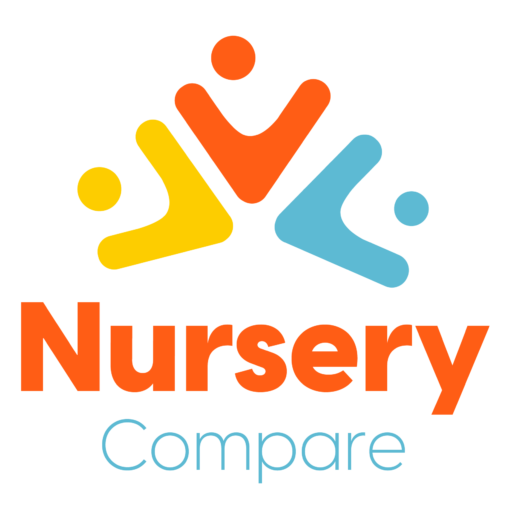
7 Key Elements of an Effective Childcare Curriculum

An effective childcare curriculum is the cornerstone of any successful early years setting. For nursery owners and managers, it’s not just about providing a safe space; it’s about offering a rich, stimulating environment that fosters holistic child development. In today’s competitive landscape, a well-thought-out childcare curriculum is your most powerful tool for attracting new families, retaining existing ones, and ensuring every child in your care thrives.
This article delves into the seven crucial elements that form the backbone of an outstanding childcare curriculum. We’ll explore how each component contributes to a child’s growth and provide practical insights and actionable tips for you to implement, ensuring your nursery stands out as a beacon of quality early education.
The Building Blocks of Early Learning: Key Curriculum Elements
1. Language and Literacy Development
Language and literacy form the bedrock of a child’s educational journey. A robust childcare curriculum prioritises creating an immersive environment where words and stories come alive. It’s more than just teaching the alphabet; it’s about nurturing a lifelong love for communication and reading.
Activities: Interactive storytelling, diverse read-aloud sessions, playful phonics, and various writing tools. Encourage rich conversations with open-ended questions for expression and active listening.
Tips for Nurseries: Create a language-rich environment with labelled objects, displayed artwork, and reading nooks. Ensure accessible, age-appropriate books. Train staff in dialogic reading and questioning. Encourage parent involvement in home literacy activities.
2. Physical Development
Physical development is crucial for a child’s overall well-being and learning. A comprehensive childcare curriculum integrates activities that strengthen both large (gross motor) and small (fine motor) muscle groups, alongside sensory experiences.
Activities: Obstacle courses, dance, and outdoor play for gross motor skills. Puzzles, drawing, playdough, threading, and child-safe cutting for fine motor development. Sand, water, and sensory bins for tactile exploration.
Tips for Nurseries: Designate safe indoor and outdoor areas for physical play. Provide a wide range of age-appropriate equipment. Regularly inspect equipment and ensure staff are trained in first aid and supervision.
3. Cognitive Development
Cognitive development in a childcare curriculum focuses on nurturing a child’s ability to think, reason, problem-solve, and remember. It’s about fostering curiosity and a love for discovery.
Activities: Puzzles, building blocks, and simple logic games. Safe science experiments exploring cause and effect. Open-ended questions for deep thinking. Pattern recognition through various aids.
Tips for Nurseries: Encourage exploration and multiple perspectives. Provide a stimulating environment for independent exploration. Tailor activities to individual developmental stages.
4. Social-Emotional Development
Social-emotional development is paramount in a childcare curriculum, focusing on a child’s ability to understand and manage their emotions, build healthy relationships, and navigate social situations.
Activities: Dramatic play and role-playing for social interactions. Simple conflict resolution strategies. Identifying and naming emotions using various tools. Activities promoting kindness and compassion.
Tips for Nurseries: Create a warm, nurturing space with clear rules. Model appropriate emotional responses and teach calming strategies. Praise positive social-emotional behaviours.
5. Creativity and Imagination
Creativity and imagination are vital for problem-solving, innovation, and self-expression. A dynamic childcare curriculum provides ample opportunities for children to explore their artistic talents and imaginative worlds.
Activities: Diverse art materials for process-oriented creation. Singing, dancing, and playing instruments. Open-ended materials for spontaneous dramatic play. Various building materials to foster spatial reasoning.
Tips for Nurseries: Ensure a rich supply of open-ended materials. Create an environment where children feel safe to express themselves. Emphasise the joy of creation and exploration over the finished product.

6. Cultural Competence
In an increasingly interconnected world, cultural competence is a critical element of a modern childcare curriculum. It involves helping children understand, appreciate, and respect diverse cultures.
Activities: Celebrate various cultural festivals. Ensure resources reflect a wide range of cultures and abilities. Invite community members to share their culture. Use maps and globes to introduce different countries and customs.
Tips for Nurseries: Provide ongoing staff training on cultural sensitivity. Review policies to ensure inclusivity for all families. Engage parents from diverse backgrounds in curriculum planning.
7. Age-Appropriate Activities
Finally, a truly effective childcare curriculum is meticulously designed to include age-appropriate activities, tailoring experiences to meet unique needs at different stages.
Tailoring Activities:
- Toddlers (1-3 years): Focus on sensory exploration, gross motor skills, and early language.
- Preschoolers (3-5 years): Introduce early maths, imaginative play, and pre-writing.
- Pre-Reception (4-5 years): Introduce more formal pre-literacy and pre-numeracy skills.
Tips for Nurseries: Staff should understand typical developmental milestones. Adapt curriculum to individual needs and interests through flexible planning. Provide opportunities for children to explore at their own pace.
Final thoughts
Crafting an effective childcare curriculum is an ongoing journey, but one that yields immense rewards. By focusing on these seven key elements – Language and Literacy, Physical Development, Cognitive Development, Social-Emotional Development, Creativity and Imagination, Cultural Competence, and Age-Appropriate Activities – you are not just providing childcare; you are building a foundation for lifelong learning and success.
For nursery owners and managers, investing in a robust and dynamic childcare curriculum is an investment in your children, your staff, and the future of your setting. It enhances your visibility, attracts more enrolments, and most importantly, ensures that every child in your care receives the very best start in life. Take the time to review your current childcare curriculum, identify areas for enhancement, and empower your team to implement these strategies. Your dedication to excellence will undoubtedly shine through, creating a nurturing and enriching environment where every child can flourish.
FAQ about Childcare Curriculum
- What is a childcare curriculum?
A childcare curriculum is a structured plan that outlines the educational goals, learning experiences, and activities provided to children in an early years setting.
2. Why is a strong childcare curriculum important for my nursery?
A strong childcare curriculum is vital for your nursery for several reasons. It ensures a high standard of education and care, promotes holistic child development, and provides a clear framework for staff.
3. How can I assess the effectiveness of my nursery’s curriculum?
Assessing the effectiveness of your childcare curriculum involves observing children’s engagement and progress, gathering feedback from parents and staff, and regularly reviewing learning outcomes against developmental milestones.
4. What role do parents play in their child’s curriculum?
Parents play a crucial role in their child’s childcare curriculum. They are a child’s first educators, and their involvement significantly enhances learning.
5. How often should a childcare curriculum be reviewed or updated?
A childcare curriculum should be a living document, regularly reviewed and updated to remain effective and relevant. It’s advisable to conduct a comprehensive review at least annually.
Don’t miss our latest article: “Daycare Business Name Ideas That Parents Will Remember“